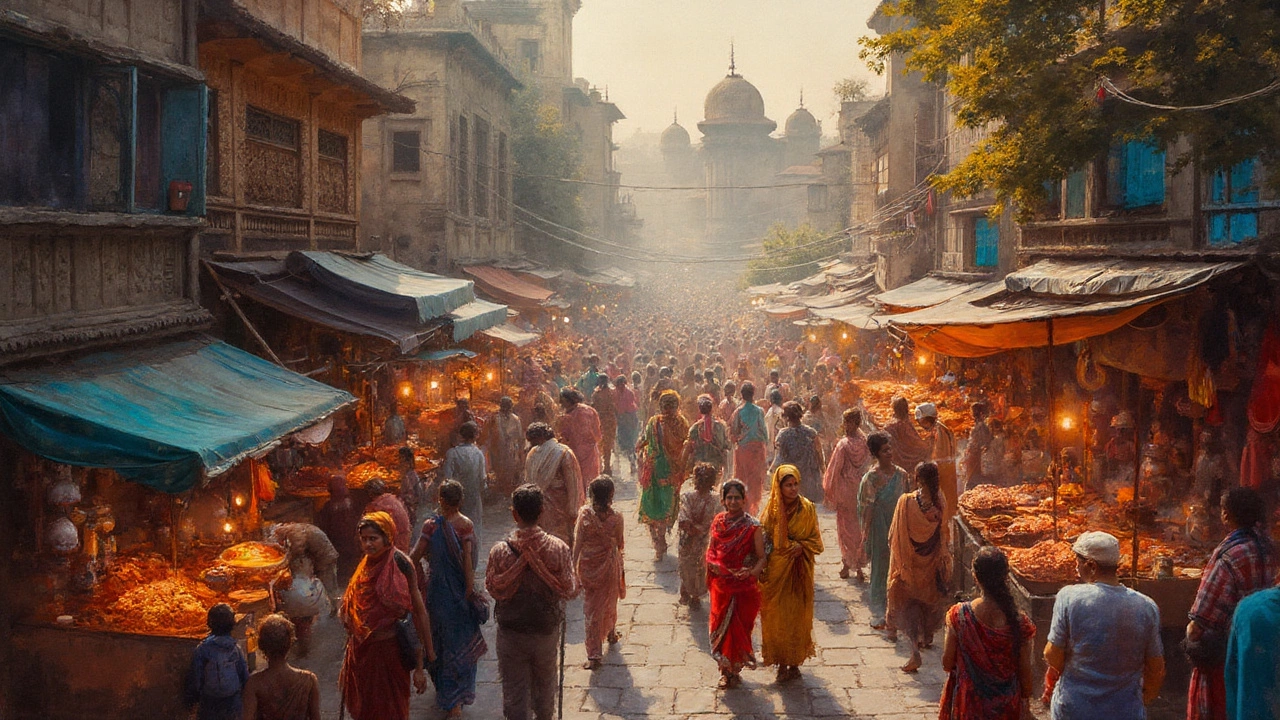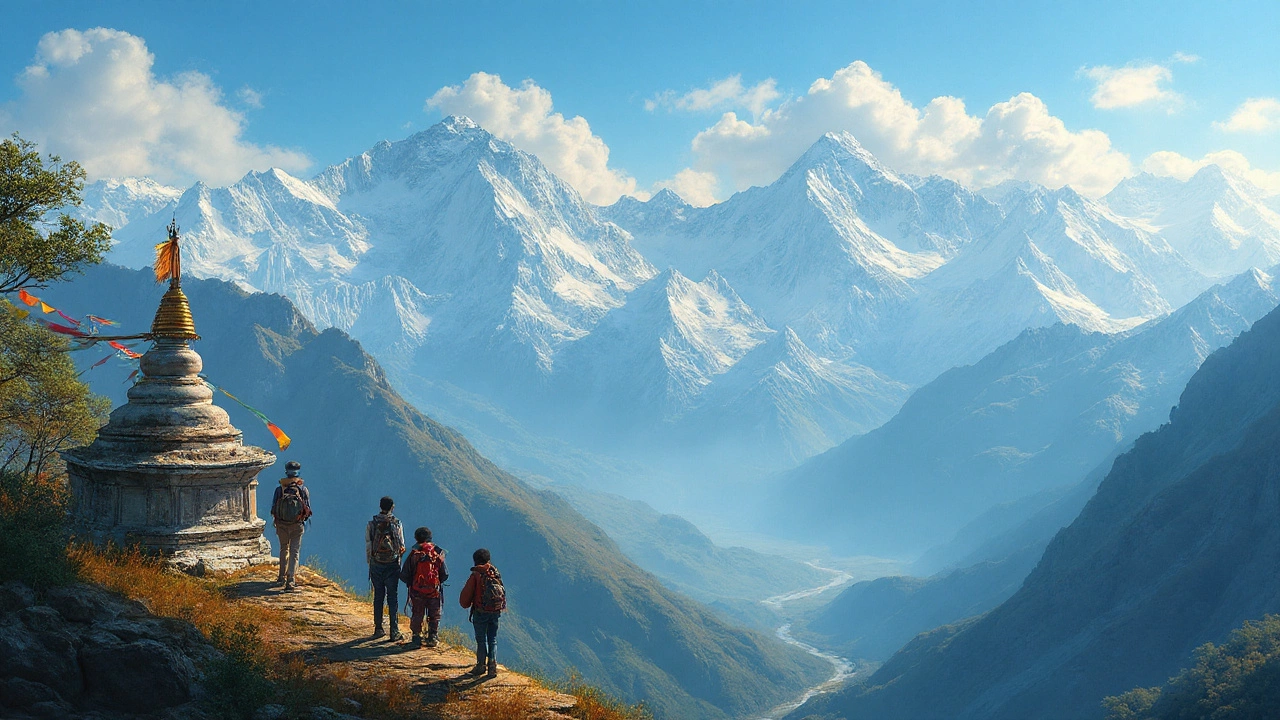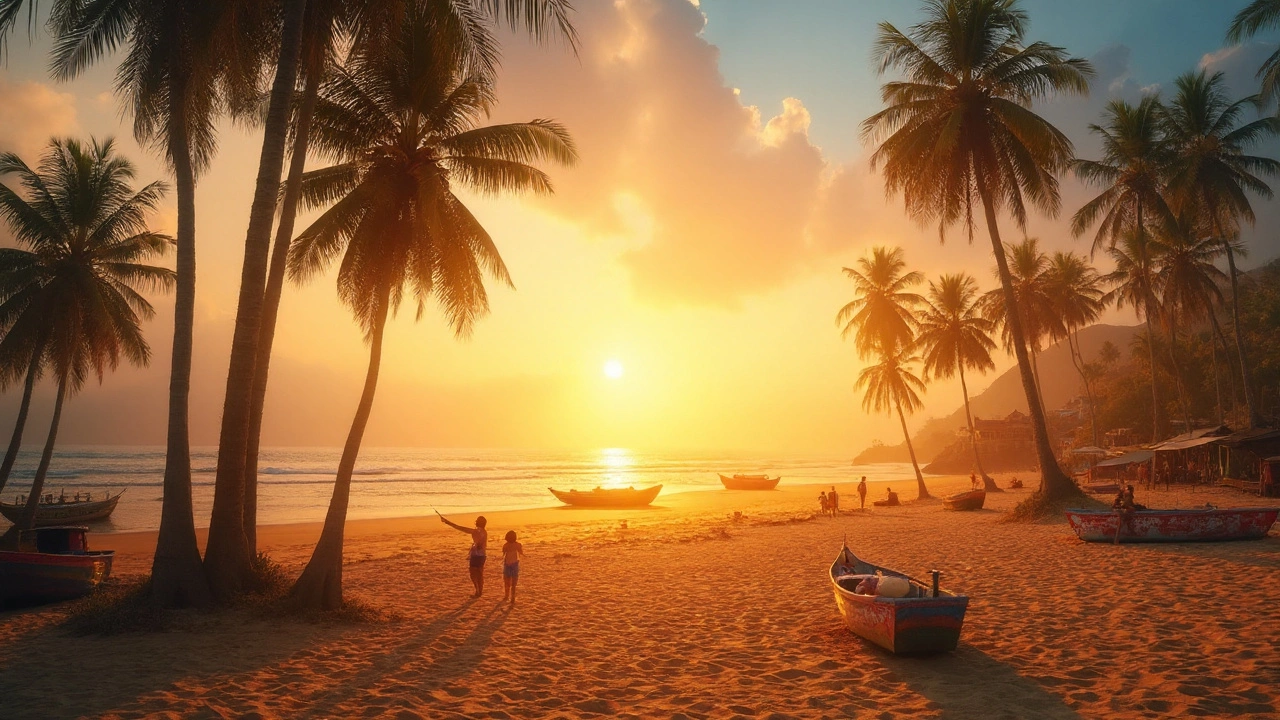Why Do Tourists Love India? Exploration, Culture, Food, and Unforgettable Experiences
 Aug, 7 2025
Aug, 7 2025
The cliché goes that you either love India or you don’t, but no one ever leaves unaffected. It hits the senses like nowhere else—aromas of cardamom and diesel, thumping Bollywood beats, temple bells at sunrise, and splashy saris on dusty streets. India has this uncanny way of making anyone’s travel bucket list feel puny. Maybe it’s the way strangers will share chai and stories on a train, or how you might wander down an alley and chance upon a thousand-year-old stepwell. Every twist and turn delivers a new scene straight out of a movie—sometimes chaotic, sometimes heartbreakingly beautiful, always unforgettable. But what is it exactly that draws millions from across the world to this mind-boggling country, again and again?
Colorful Traditions and Deep-Rooted Heritage
India’s cultural depth isn’t a tourist trap—it’s everywhere, pulsing through crowded city markets and sleepy rural temples alike. You touch down in Delhi, and the first thing you get is the noise: auto-rickshaws honking, vendors hawking bright bangles, the celebratory blast of a wedding band. It’s not just chaos for chaos’ sake, though. Much of it traces back centuries. For example, Holi—the famous Festival of Colors—has been going strong since the fourth century and now draws tourists from New Zealand, Brazil, Japan, you name it. Did you know Diwali (India’s Festival of Lights) is observed by over a billion people worldwide each year? And yet, light-up celebrations in Varanasi feel as ancient as the Ganges itself. You can witness thousands of clay lamps floating on the river; it’s mesmerizing, even if you’ve seen it a dozen times.
Culture here isn’t boxed in museums, although the museums are worth your time, too. It’s visible on the streets: the grandeur of Jaipur’s City Palace, the stark elegance of South Indian temples with their riot of carved figures, the stoic mud homes in Ladakh. Take a train to Rajasthan in winter and you can watch camel herders in bright turbans in Pushkar’s fairgrounds, right beside European backpackers taking selfies with decorated cattle. Even wedding guests can number in the thousands, invited from far and wide—hospitality is a sacred duty here. That’s probably why, more often than not, you’ll end up being invited for tea or a home-cooked meal within days of arriving.
India’s festivals, rituals, and traditions aren’t mere performances. Wondering why locals draw white kolam patterns outside their homes at dawn in Tamil Nadu? It’s not just for beauty—it’s a daily offering for prosperity, still performed by millions of women each morning. Or, the Great Kumbh Mela, which is considered the world’s largest religious gathering, drew a record-breaking crowd of 240 million devotees in 2019, making even the biggest concerts look tiny by comparison. Religious diversity is a fact of life here. India is the birthplace of Hinduism, Buddhism, Jainism, and Sikhism, and you’ll find mosques, churches, and synagogues—sometimes on the same street. The sheer mix is mind-blowing, but the everyday coexistence is what makes it real.
If you’re in it for music and dance, look no further. Classical arts like Bharatnatyam, Kathakali, and Odissi aren’t just historic—they’re alive in evening performances, school competitions, and TV talent shows watched by millions. You can crash a random wedding in Goa and end up dancing the dandiya, or find yourself roped into a Bollywood flash mob near Marine Drive in Mumbai. No matter what you chase—be it solitude among ancient temples, crowd energy in a Holi riot, old-world crafts in a quiet Assamese village, or street art in Bangalore—you always feel like you’re part of something alive and evolving. This is why the question, “Why do tourists love India?” almost answers itself when you’re actually there.

Unmatched Gastronomy: Feasts Worth the Trip
Food in India is an adventure, plain and simple. You could spend your entire trip only eating and never repeat a dish. There are more than 20 official languages in the country and trust me, there are more than 2,000 regional flavors. If you land in Punjab, be ready for butter chicken so creamy it turns your soul into butter. Down in Kerala, breakfast means fluffy idlis (steamed rice cakes) with coconut chutney, served under banana leaves that you’re only allowed to fold one way when done. Anyone who says “Indian food is just curry” has barely scratched the surface.
Street food is serious business here. In Delhi, you get spicy chaat, golgappas filled with tamarind water, and winter-hot parathas oozing with ghee. Visit Kolkata for doi phuchka (yes, yogurt with spiced water balls is a thing) and iconic rosogolla that dissolves faster than you can say “second helping”. Mumbai’s vada pav—basically a spicy potato burger and the city’s answer to fast food—has fans from every walk of life, from Bollywood stars to train drivers. Local favorites change every few blocks. Pop into a dhaba (roadside eatery) along a dusty Punjab highway and you’ll get lentils smoky from charcoal fires, or in Gujarat, a thali (platter) filled with sweet, sour, spicy, and salty all on one sprawling steel plate.
The stats say it all. According to India’s Ministry of Tourism, food tourism boomed by 18% last year, with 73% of foreign tourists naming “trying new cuisines” as a top reason for visiting. It’s not just about spice or heat, either—it’s about freshness, variety, unlocking new combinations. Indians love to eat and feed, so don’t be surprised if strangers urge you to try “just one more” serve of biryani or jalebi. Vegetarians and vegans have it especially easy; it’s one of the few places in the world where “plant-based” isn’t just a trend but a way of life for millions.
You might ask: What about Delhi belly? Honestly, eat where locals eat, use bottled water, and you’ll likely be fine. Anywhere there’s a line of autos and families, you’re safe. Also, street food safety is going up year by year as local governments are pushing hygiene standards ahead of the 2030 tourism goals.
Got a sweet tooth? India’s desserts are intoxicating. Gulab jamuns (syrup-drenched dough spheres), sticky jalebis, mango kulfi (think ice cream but richer), and Payasam made during festivals in South India—these are all worth every calorie. The best tip for foodies: ask locals for their personal favorites, try tiny family-run places in side lanes, and don’t stick to your guidebook’s top ten. With over 50 types of regional biryanis, dozens of artisanal cheeses from the Himalayas, and even local wines and craft beers booming in the past five years, India’s food scene has never been more exciting. Below, take a look at a quick breakdown of popular Indian foods by region:
| Region | Popular Dishes |
|---|---|
| North India | Butter Chicken, Chole Bhature, Rogan Josh, Samosa, Paneer Tikka |
| South India | Dosa, Idli, Sambar, Fish Curry, Payasam |
| East India | Sandesh, Macher Jhol, Momos, Litti Chokha |
| West India | Vada Pav, Dhokla, Pav Bhaji, Goan Prawn Curry |

Breathtaking Landscapes and Unfiltered Experiences
This is a country where you can lounge on a sun-soaked beach, hike up a glaciated Himalayan peak, track wild tigers, drift through backwaters on a wooden boat, or get lost inside the ruins of a lost empire—all in the span of a few weeks. India’s landscapes are not just postcards—they shape daily life and color every experience. The snow-blanketed valleys of Kashmir, just a short flight from Delhi, look like they’ve leapt out of a fairy tale (with some of South Asia’s best tulip gardens in spring, by the way). Manali is ground zero for hiking, paragliding, and epic road trips on the Leh-Manali highway—often called the world’s highest drivable road.
Rajasthan brings desert forts that glow gold at sunset and camel caravans that seem unchanged since the time of the spice trade. Head east to Assam, and you’ll walk through tea plantations misty with early morning dew—try waking up with a single-estate brew as the sun breaks through the bamboo. Kerala, meanwhile, brims with jungly spice fields, elephant reserves, and the legendary “backwaters”—a maze of lagoons and canals best explored in a houseboat. The Andaman Islands? Paradise, with living coral reefs, blue surf, and white sand where mobile phone coverage barely exists.
Wildlife lovers can spot the Bengal tiger in Jim Corbett or Bandhavgarh, rhinos in Kaziranga, elephants in Periyar, and even lions in Gujarat’s Gir Forest—India is the only country outside of Africa where wild lions roam free.
Tourism numbers back up India’s rise as a must-see destination. The country’s Ministry of Tourism reported that over 17.5 million international travelers arrived in 2023, and those numbers are climbing as new air routes open from Europe and Australia. Adventure travel and eco-tourism are booming—think mountain biking in Sikkim, yoga retreats in Rishikesh (yes, the Beatles really did meditate there), and scuba diving off the West coast.
But ask anyone who’s been and they’ll mention the “unexpected moments”. Maybe a street cow blocks your way as you’re rushing to catch a train, or you discover a centuries-old artisan at work weaving the same silk patterns worn by kings. Indians take their hospitality seriously. Seasoned travelers say they’ve gotten more invitations—whether to join a rural wedding, festival, or simple home dinner—than anywhere else on Earth. These raw, real moments, often unplanned, stick in your memory years after the palaces and temples blur together.
The best tip for making the most of India is to keep your plans flexible. Accept that things won’t always run on time and surprises are part of the deal. Download a rail app, bring cash for small purchases, and keep your camera ready—but don’t glue yourself to your phone. Some of the most magical moments happen when you’re looking up and curious, whether you’re haggling in a bazaar or sipping tea in the mountains. When you leave India, you’ll carry more than souvenirs—you’ll bring home stories that only you could have experienced.
So, why do tourists love India? Taste, color, chaos, calm, generosity, the thrill of the unknown—it’s a country that flips the ordinary upside-down and writes its own rules. No matter how many times you visit, each trip feels new, and every story is uniquely yours.